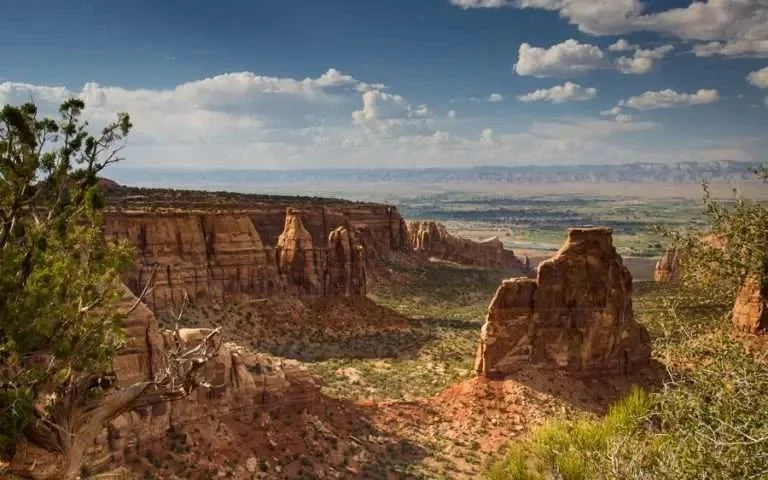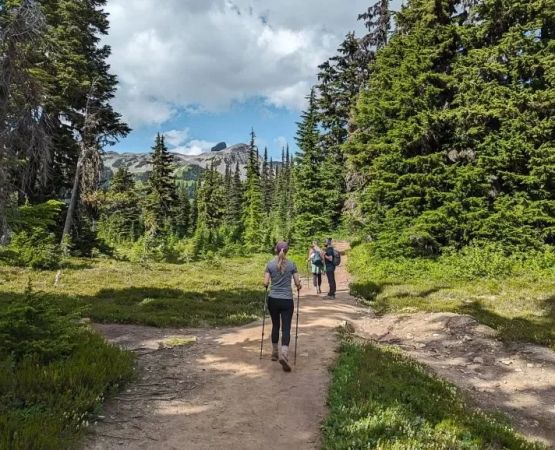- 1 - #understanding-national-monuments - Understanding National Monuments and Historical Sites
- 2 - #benefits-of-camping-in-national-monuments - Benefits of Camping in National Monuments
- 3 - #best-national-monuments-for-camping - Best National Monuments and Historical Sites for Camping
- 4 - #planning-your-camping-trip - How to Plan Your Camping Trip in National Monuments
- 5 - #camping-gear-and-tips - Essential Camping Gear and Tips for National Monument Visits
- 6 - #camping-safety-and-regulations - Safety and Regulations for Camping in National Monuments
1. Understanding National Monuments and Historical Sites
National monuments and historical sites are protected areas across the U.S., recognized for their cultural, historical, and natural significance. Many of these areas allow visitors to camp, offering a unique way to connect with history while immersing yourself in nature. However, each monument has specific rules regarding camping, so understanding these guidelines is key to a successful trip.
What Are National Monuments?
National monuments are federally protected areas designated to preserve their cultural or natural resources. Unlike national parks, which are larger and offer a wide range of recreational activities, national monuments often focus on preserving specific cultural landmarks, historical sites, or unique natural formations. Some popular national monuments like the Grand Canyon and the Washington D.C. monuments also offer nearby camping options for visitors.
2. Benefits of Camping in National Monuments
Camping in national monuments offers numerous benefits, including the opportunity to experience breathtaking landscapes, engage with history, and enjoy a peaceful environment away from the hustle and bustle of everyday life.
Close Connection to History
When you camp in a national monument, you’re not just surrounded by natural beauty; you’re also immersed in rich history. Many of these sites preserve landmarks that tell the stories of the nation's past, from prehistoric Native American ruins to colonial-era fortifications. Camping near these sites provides a chance to reflect on the history that shaped the United States.
Incredible Scenic Views
National monuments often feature dramatic landscapes, including rugged cliffs, expansive deserts, or lush forests. These scenic areas provide perfect settings for stargazing, hiking, and outdoor adventures during the day and quiet reflection by the campfire at night.
Peaceful and Secluded Locations
Unlike national parks, which can be crowded, national monuments often offer more secluded and tranquil camping experiences. This makes them perfect for those looking to escape into nature and enjoy some solitude in a historically significant setting.
3. Best National Monuments and Historical Sites for Camping
Several national monuments across the U.S. offer fantastic camping opportunities. Here are some of the best spots to consider for your next camping trip:
1. Grand Canyon National Monument (Arizona)
The Grand Canyon is one of the most iconic landmarks in the U.S., offering stunning views and diverse hiking trails. Camping near the Grand Canyon allows you to experience the natural wonder up close while staying in one of the designated campsites in the area.
2. Yellowstone National Monument (Wyoming, Montana, Idaho)
Yellowstone offers both history and natural beauty, from geysers and hot springs to historical landmarks. Camping here gives visitors a chance to explore its diverse ecosystems, including wildlife and geothermal features, while experiencing the nation's first national park’s history.
3. Statue of Liberty National Monument (New York)
For those interested in American history, the Statue of Liberty is an iconic symbol of freedom and democracy. While camping is not directly allowed on Liberty Island, nearby campgrounds offer visitors easy access to this historical monument and surrounding landmarks.
4. Mesa Verde National Monument (Colorado)
Mesa Verde offers a glimpse into the lives of ancient Native American cultures. Camping near the cliff dwellings and historical sites lets visitors immerse themselves in both the culture and nature of this fascinating monument.
4. How to Plan Your Camping Trip in National Monuments
When planning your camping trip, it's essential to consider the unique aspects of each national monument. Below are some tips for ensuring a smooth and enjoyable experience:
1. Reserve Campsites in Advance
Many national monuments require reservations for campsites, especially during peak seasons. Be sure to book your campsite in advance to secure your spot and avoid disappointment.
2. Check for Specific Regulations
Each national monument may have specific rules regarding camping, such as designated camping areas, campfire restrictions, and waste disposal requirements. Be sure to familiarize yourself with these regulations before your trip to ensure you comply with all guidelines.
3. Pack the Essentials
Don’t forget to pack the essential camping gear, including a sturdy tent, sleeping bag, cooking supplies, and enough water. Depending on the location, you may also need specialized equipment such as hiking gear or weather-appropriate clothing.
5. Essential Camping Gear and Tips for National Monument Visits
Camping in national monuments requires thoughtful preparation. Here are some essential items to bring with you, as well as tips for making your stay more comfortable:
1. Tent and Sleeping Gear
Choose a durable, weather-resistant tent and bring a comfortable sleeping bag suited for the climate. Ensure you have proper insulation if you're camping in colder environments or higher elevations.
2. Cooking Equipment and Food
Bring a portable stove, pots, and utensils for cooking, along with enough food to last the duration of your trip. Many national monuments have nearby stores or visitor centers where you can stock up on essentials.
3. Water and Hydration
Water is a crucial resource when camping. Be sure to bring enough water, and if camping in a remote area, consider bringing a water filtration system to safely drink from natural sources.
4. Leave No Trace
Respect the environment by practicing Leave No Trace principles. Pack out all trash, minimize campfire usage, and stay on designated trails to protect the natural beauty of the monument.
6. Safety and Regulations for Camping in National Monuments
For a safe and enjoyable camping experience, be aware of the safety guidelines and regulations specific to each monument:
1. Wildfire Awareness
Many national monuments, especially those in dry areas, are at risk of wildfires. Be cautious with campfires, follow all fire regulations, and keep an eye on any local fire warnings.
2. Wildlife Safety
National monuments often attract wildlife, so store food securely and avoid interacting with animals. Carry bear spray if camping in areas known for bear activity.
3. Leave No Trace
Preserve the beauty of the national monuments by following Leave No Trace principles. Dispose of waste properly and avoid disturbing wildlife and vegetation.
By following these tips and understanding the specific rules for each monument, you can have an unforgettable camping experience in some of the most scenic and historically rich locations in the U.S. Whether you're looking to hike through rugged landscapes or learn more about America's history, national monuments provide the perfect setting for a memorable adventure.







